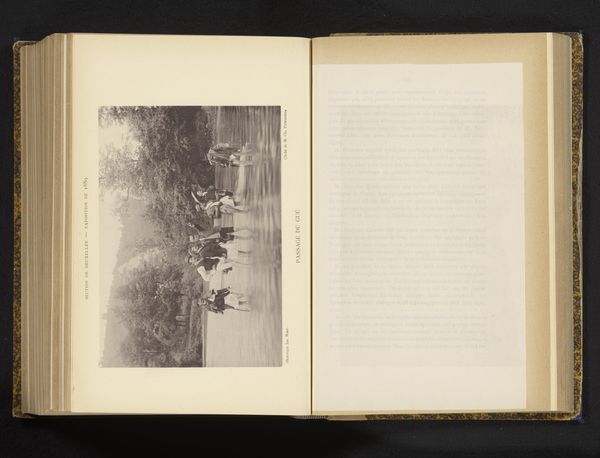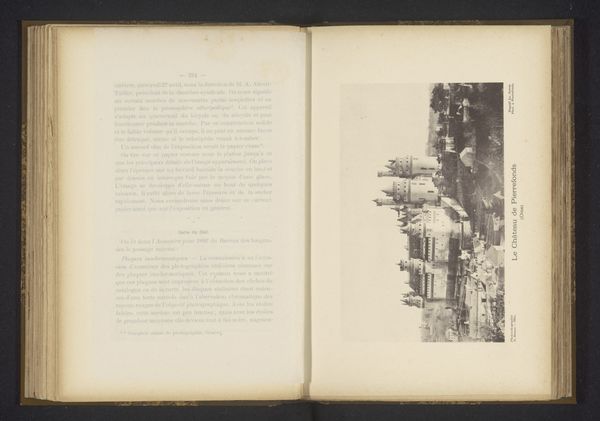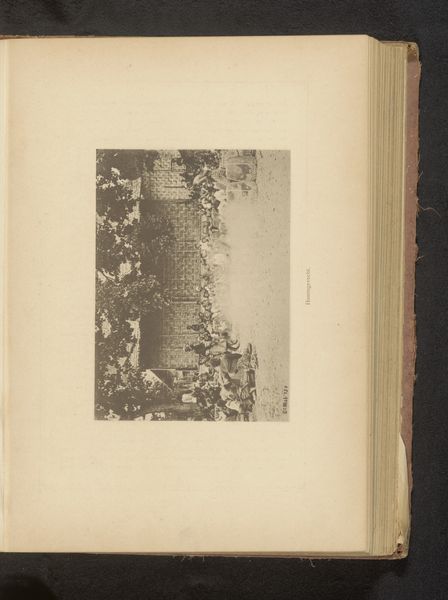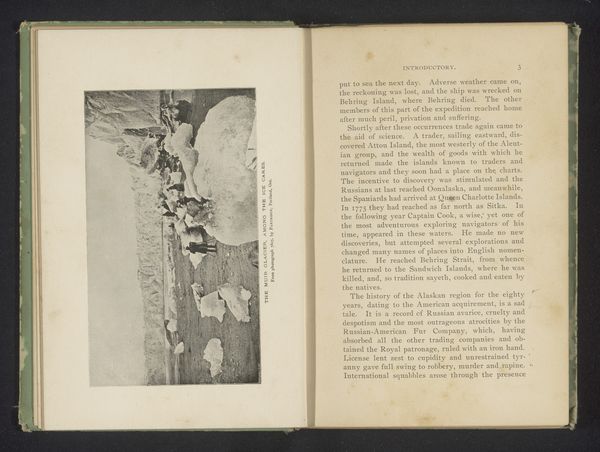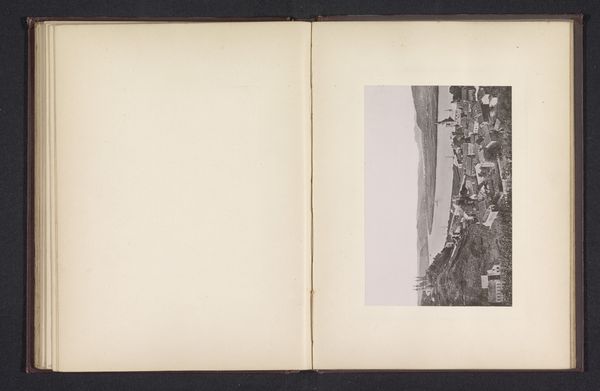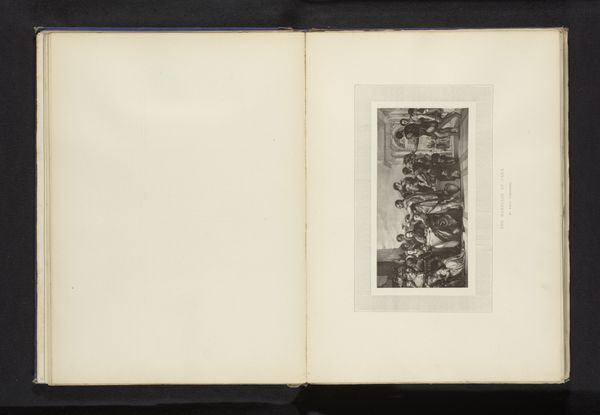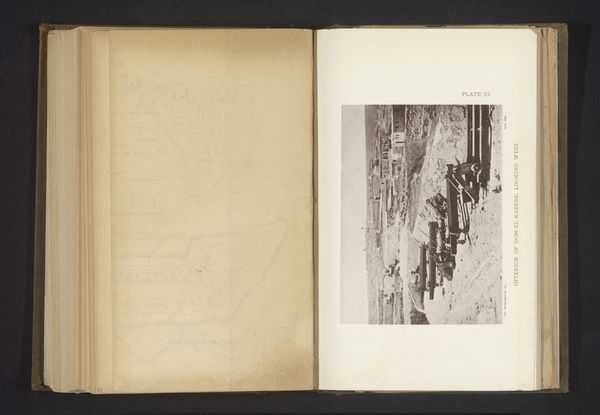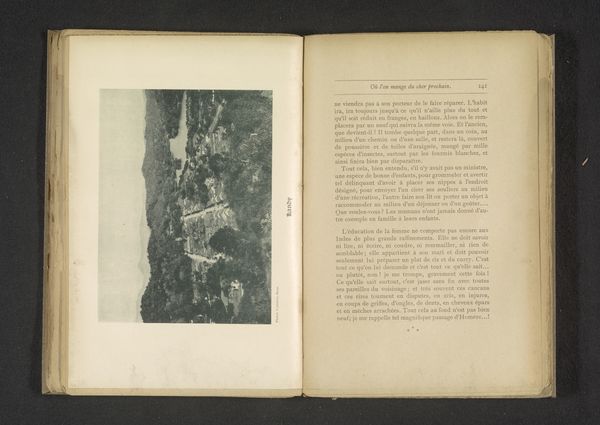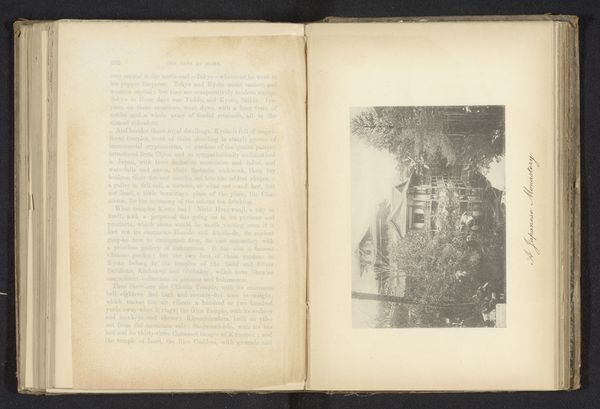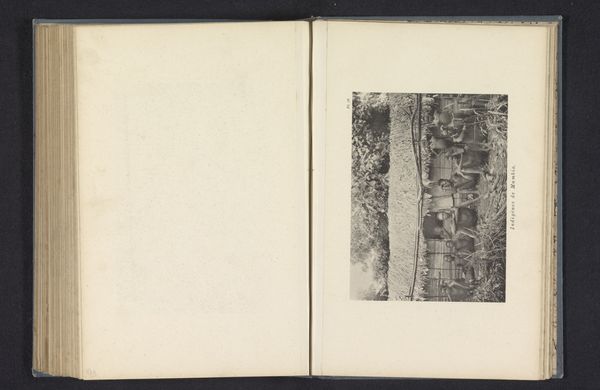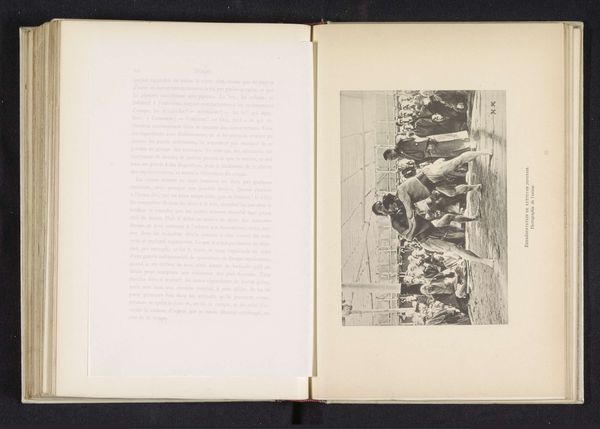
Groepsportret van leden van de Union Internationale de Photographie Possibly 1893 - 1898
0:00
0:00
Dimensions: height 105 mm, width 160 mm
Copyright: Rijks Museum: Open Domain
Editor: Here we have a photographic print, possibly an albumen or gelatin silver print, entitled "Groepsportret van leden van de Union Internationale de Photographie," which translates to "Group Portrait of Members of the International Union of Photography." It’s dated sometime between 1893 and 1898, attributed to Jules Royer. It shows a gathering, maybe a field trip? What jumps out to me is the somewhat blurry, almost dreamlike quality, quite different from the crispness we expect in modern photography. What are your thoughts on this piece? Curator: The softness of the image is quite telling. In our contemporary moment, sharpness often signifies "truth," yet here, the gentle focus invokes something closer to memory. Consider the subjects: members of a photographic union. Photography, still a relatively new medium at this point, was rapidly changing how people saw themselves and the world. So, how might they wish to be seen, not just as individuals, but as representatives of this burgeoning field? Note, too, that it appears reproduced in a book—how does the shift from event to document change its cultural resonance? Editor: I see what you mean about "memory" – it is like a faded snapshot of a moment in time. I wonder, given that it's a group of photographers, if they were particularly conscious of crafting an image, creating a symbol of their collective identity. Curator: Precisely! Group portraits in this era were often highly staged, full of encoded information about status, affiliations and ideals. Each face, each pose contributes to the overall statement. Ask yourself: what did they want to project? Editor: That’s a great question! Thinking about it as a constructed image and not just a record makes me reconsider it entirely. Thanks! Curator: And it reminds us that even something that appears straightforward, like a photograph, is imbued with intention and symbolism. It's these layers that keep art endlessly fascinating.
Comments
No comments
Be the first to comment and join the conversation on the ultimate creative platform.
